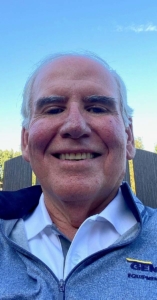The Critical Importance of Measuring…
Today’s guest post, The Critical Importance of Measuring the Customer and Employee Experience, is from Ryan Condon. Ryan is the Co-Founder and CEO of SATISFYD. He has grown from a first-time entrepreneur at 24 years-old, to a business leader with 20+ years of software and service experience. Ryan was an early innovator in Customer Experience (CX) Management and developed a SaaS platform in 2001 to enable clients to gather feedback, resolve customer issues, and drive customer-focused initiatives. The SATISFYD platform provides Customer and Employee experience at every level of an organization and has been used in over 70 countries and 32 different languages. Ryan, his wife Aimee and their family moved from Chicago to Austin in July of 2016 to escape the northern winters and enjoy the outdoors.
The Critical Importance of Measuring the Customer and Employee Experience
We are at an interesting and ever-evolving crossroads as it relates to customer and employee experience. Although most believed we were already experiencing a gradual sea change where the importance of physical location on work options was diminishing over time, COVID has forced a more rapid transition to work-from-home/work anywhere opportunities for workers. This sudden change has been challenging for many as they try to adjust to this ‘New Normal.’ Opinions vary from those who think we will never return to working full time in physical locations to those who expect everyone will rush back into a collective space as soon as it is deemed safe.
Regardless of what side of this fence you sit on, we can all agree that things will never be the same. What this exactly means for the future is uncertain, making it critically important that we constantly keep our pulse on the ever-changing sentiment of our prospects, customers, employees, and candidates for employment. While existing employees will most likely stay at their current jobs short-term, they are being presented with new opportunities that do not require a physical presence and may be perceived as less risky to an in-person job. Candidates that you interview are actively listening and evaluating the different approaches organizations are taking to manage through COVID. How these approaches align with candidates’ beliefs and desires will have an important impact on their employment decisions. How is your organization being perceived?
This is a dynamic time
It requires flexibility, forward-thinking, and a willingness to challenge the norms that have made your business successful up until now. Good leaders will attempt to solve these challenges for stakeholders by drawing on years of experience and having a conversation with direct reports. Great leaders will also be sure to collect information from all stakeholders (prospects, customers, employees, and candidates) and constantly make course corrections to their organization as needed. They will also be testing and evaluating the outcome of those changes by continuously listening to feedback from stakeholders.
In these challenging times, it is more important than ever to listen. Those leaders who are able to gather and utilize stakeholder feedback in order to anticipate and adapt to change will have the edge.
We will discuss this more in future blogs.
Please visit our website at learningwithoutscars.org for information on our course offerings.






